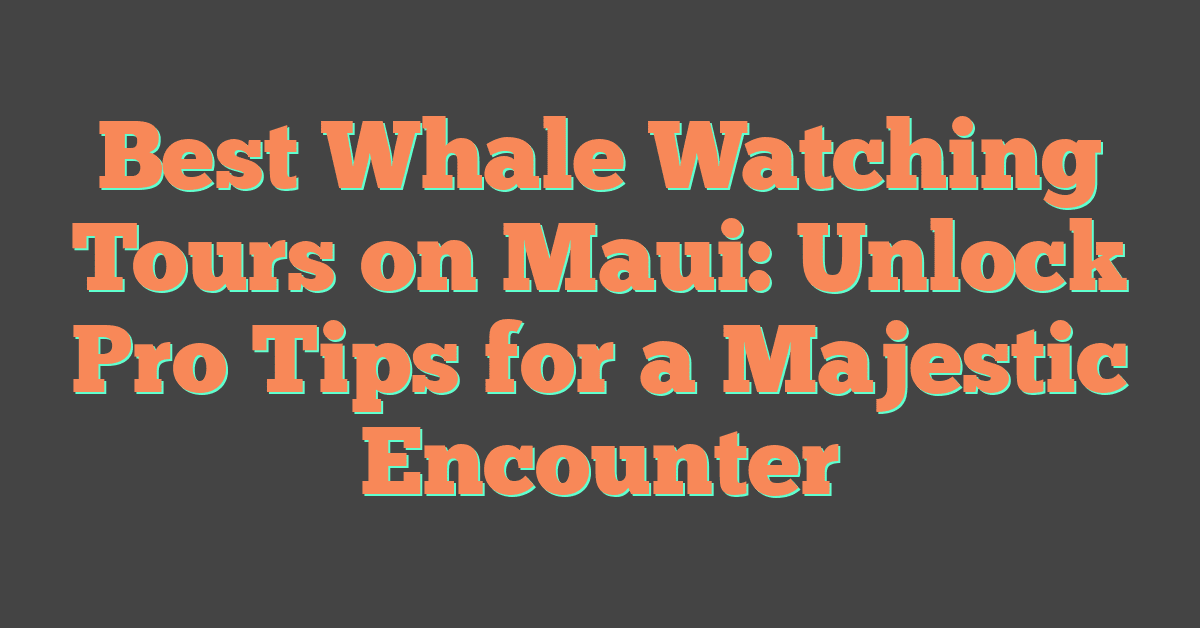Oahu features a mix of calm bays and powerful surf breaks, making it a top destination in Hawaii for ocean lovers. The best beaches in Oahu for swimming and surfing offer clear water, clean sand, and conditions for both beginners and experts.

You can find gentle shores perfect for relaxing dips and world-famous waves that challenge skilled surfers. Each beach has its own unique appeal.

Offshore reefs keep some beaches, like Lanikai Beach, calm and ideal for swimming and snorkeling. The North Shore’s Banzai Pipeline attracts surfers from around the world during winter.
Waikiki Beach offers mellow surf close to the city and has plenty of space for swimming.
Oahu also has smaller coves and local favorites that provide a quieter beach experience. These spots let you enjoy the island’s natural beauty and offer safe swimming or fun waves.
Top Beaches in Oahu for Swimming

Oahu provides sandy shores with clear water, gentle waves, and safe swimming areas. Some beaches have lifeguards, restrooms, and food nearby, while others offer quieter spots away from crowds.
Waikiki Beach: Iconic Urban Swimming
Waikiki Beach is one of the most popular Oahu beaches for swimming. It stretches for about two miles on the South Shore and is divided into small sections by seawalls and piers.
Offshore reefs keep the water generally calm, making it suitable for beginners and casual swimmers.
The beach has lifeguards, showers, restrooms, and many dining options within walking distance. Visitors can rent beach chairs, umbrellas, and snorkeling gear.
Waikiki gets crowded, but early mornings are quieter with more space. Families enjoy the shallow entry and soft sand, which help children play safely in the water.
Lanikai Beach: Tranquil Blue Waters
Lanikai Beach, near Kailua, features soft white sand and clear turquoise water. An offshore reef keeps waves small, creating safe swimming most of the year.
There are no lifeguards or facilities, so visitors should bring water, snacks, and shade. Parking is limited to nearby residential streets, with access through small public paths.
The water is shallow near shore and has good visibility, making it popular for snorkeling. Kayakers often paddle to the Mokulua Islands about a mile offshore.
Lanikai’s quiet, scenic setting makes it ideal for those who want a peaceful beach day.
Kailua Beach Park: Family-Friendly Fun
Kailua Beach Park sits about a mile north of Lanikai and offers more amenities. The beach is wide with soft sand and gentle waves.
Restrooms, showers, picnic tables, and parking are available. Lifeguards are on duty during the day, adding safety for families.
The water is clear and shallow near shore, making it great for swimming, boogie boarding, and stand-up paddleboarding. Afternoon trade winds attract windsurfers.
Kailua Beach Park’s calm mornings, space for activities, and nearby shops make it a versatile choice for all ages.
Ko Olina Lagoons: Calm and Safe Swimming
The Ko Olina Lagoons on Oahu’s leeward coast include four man-made coves with rock barriers that block strong waves. The water inside stays calm, even when the ocean is rough.
Each lagoon has sandy entries, grassy areas, and paved walking paths. Restrooms, showers, and parking are available, though public spaces can be limited.
Families with young children like these lagoons for their predictable conditions and easy supervision. The gentle slope into the water makes wading comfortable.
Ko Olina is also close to resorts and dining, so visitors can swim and then enjoy a meal or an evening stroll along the waterfront.
Best Beaches in Oahu for Surfing
Oahu’s North Shore features some of the world’s most famous surf breaks. These beaches attract professional surfers and spectators, offering challenging waves in winter and calmer conditions in summer.
Each spot has unique wave patterns, skill levels, and seasonal changes.
Banzai Pipeline at Ehukai Beach
The Banzai Pipeline at Ehukai Beach produces powerful, hollow waves that break over a shallow reef. Expert surfers and professional competitions favor these thick tube waves.
Winter swells can reach 20 feet or more, creating dangerous but thrilling surf. In summer, the water calms down, and people swim or snorkel near Shark’s Cove.
Beginners should avoid this break due to sharp reefs and strong currents. Many people watch from the sand to see surfers ride some of the world’s most photographed waves. Lifeguard stations provide added safety.
Sunset Beach: Legendary Waves
Sunset Beach on the North Shore of Oahu delivers long, powerful waves that can stretch for hundreds of yards. The Triple Crown of Surfing makes a stop here every winter, drawing top athletes.
Waves can exceed 20 feet during peak season, so only highly skilled surfers should enter the water then. In summer, the ocean becomes calmer, and swimming and snorkeling are popular.
The wide sandy shoreline gives spectators plenty of space to watch. Nearby, Laniakea Beach—also called Turtle Beach—offers a chance to see Hawaiian green sea turtles resting on the sand.
Waimea Bay: Big Wave Surfing
Waimea Bay is a historic big wave surfing spot. In winter, swells can reach 30 feet, and the bay hosts the Eddie Aikau Big Wave Invitational when conditions are right.
Waves here break closer to shore than at other North Shore spots, so spectators get impressive views. Strong rip currents and heavy shorebreak make it dangerous for inexperienced surfers during big swells.
In summer, Waimea Bay becomes a calm, clear swimming spot with great snorkeling. Families often visit then to enjoy the sandy beach and gentle waters.
Makaha Beach: Classic Surf Spot
Makaha Beach sits on Oahu’s west side and is one of Hawaii’s original surf spots. It has a strong competitive surfing history and consistent waves, especially in winter.
Makaha offers a variety of breaks for different skill levels, but larger winter waves are best for experienced surfers. The outer reef creates long rides and clean faces when conditions are good.
In calmer months, people come for bodyboarding, stand-up paddleboarding, and swimming. Its location away from the North Shore makes it less crowded but still offers quality surf.
For more details, see Oahu’s best surfing beaches and their seasonal conditions.
Hidden Gems and Local Favorites
Some Oahu beaches offer quiet surroundings and unique scenery for both swimmers and surfers. These spots usually have fewer crowds than places like Waikiki or Hanauma Bay, so you can enjoy the water at a slower pace.
Malaekahana Beach: Secluded Escape
Malaekahana Beach lies on Oahu’s North Shore, just north of Laie. It stretches nearly a mile with soft sand and calm waters most of the year.
The peaceful setting makes it ideal for picnics, beach walks, or light swimming. You can reach Goat Island offshore by wading at low tide, but currents can be strong, so caution is important.
Facilities are simple, with restrooms, showers, and campsites available. This makes it a good spot for those who want to spend more time at the beach.
Because fewer people visit than at Hanauma Bay, enjoying the natural surroundings is easier here.
Sandy Beach: Bodysurfing Hotspot
Sandy Beach sits east of Honolulu, near Hanauma Bay. It is known for its consistent shore break, making it a favorite for experienced bodysurfers and bodyboarders.
Waves break close to shore and can be powerful, creating exciting conditions for skilled riders. Beginners or casual swimmers should be careful, as the waves can be dangerous.
Lifeguards are on duty, and visitors should follow posted warnings. The sand is coarse and golden, and the open layout gives clear ocean views.
Parking is available but fills up on weekends. Most people come to watch or take part in the bodysurfing action.
Makapu’u Beach: Scenic Adventure
Makapu’u Beach sits below the Makapu’u Point Lighthouse and has a dramatic backdrop of cliffs and blue water. The beach is smaller than many others but offers strong, consistent waves.
Bodyboarders and bodysurfers especially enjoy it in summer. Currents can be strong, so weaker swimmers stay close to shore.
The nearby Makapu’u Point trail gives panoramic views, and you can spot whales in winter. This area appeals to both beachgoers and hikers.
Parking is available along Kalanianaole Highway, and the beach is easy to reach from Honolulu or Waimanalo.
Tips for Enjoying Oahu’s Beaches

To make the most of Oahu’s beaches, know how to stay safe, plan your visit for the best conditions, and look for helpful facilities. Spots like Waikiki near Kalakaua Avenue or Lanikai Beach by the Mokulua Islands offer unique experiences that are easier to enjoy with a little planning.
Beach Safety and Conditions
Strong currents, sharp coral, and sudden wave changes can make Oahu’s beaches dangerous. Even calm-looking water may hide rip currents, especially on the North Shore in winter.
Check posted warning signs and ask lifeguards about the day’s conditions before swimming or surfing. Lifeguards watch over popular beaches like Waikiki and Ala Moana, but some remote beaches do not have them.
Use reef-safe sunscreen to protect your skin and the marine environment. Wear footwear to prevent cuts from coral or rocks.
Beginners should visit areas with gentle waves, like Waikiki. Experienced surfers often choose more challenging breaks near Diamond Head.
Best Times to Visit
Morning hours usually bring calmer waters and lighter crowds. This is a good time for swimming or paddleboarding before the trade winds start.
In summer, the North Shore often has gentler surf. Winter brings larger waves for experienced surfers.
South Shore beaches, including those along Kalakaua Avenue, offer consistent conditions for both swimming and surfing throughout the year.
Tide schedules can change beach size and safety. Low tide exposes more reef, while high tide reduces sand space.
Check a local surf and weather report before heading out to avoid surprises.
Amenities and Accessibility
Many popular Oahu beaches provide showers, restrooms, and picnic areas. Waikiki Beach offers easy access to shops and restaurants along Kalakaua Avenue.
This location is convenient for families and those without a car. Kailua Beach Park, near the Mokulua Islands, features parking, restrooms, and shaded picnic spots.
Hanauma Bay rents equipment and has a visitor center. You need to pay an entry fee and make a reservation to visit.
Some beaches offer limited parking or require a short walk from the lot. Arriving early or using public transportation helps make access easier.
Visitors with mobility needs should choose beaches with paved paths and accessible facilities. Ala Moana Beach Park is one such option.




